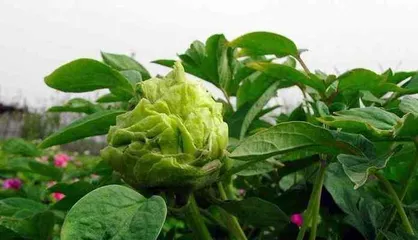The peony tree is known as the king of flowers, and its beautiful blossoms and unique posture captivate many. However, caring for a peony tree also requires certain skills and knowledge. This article will introduce the cultivation methods and precautions for peony trees to help everyone better care for them, allowing the flowers to bloom more beautifully.

Choose the right soil
Choosing the right soil is key to caring for peony trees. Peony trees prefer loose, fertile, and well-drained soil and should not be planted in heavy, oxygen-deficient soil. You can add an appropriate amount of well-rotted organic fertilizer to the substrate to ensure soil fertility.
Maintain proper humidity
Peony trees have high water requirements, but overwatering should be avoided to prevent root rot. In spring and autumn, the soil's proper moisture should be maintained, while in summer, the amount of watering should be appropriately reduced to prevent waterlogging.

Prune branches and leaves appropriately
Pruning is key to maintaining the shape and health of peony trees. Pruning is generally done after flowering or in autumn, promptly removing diseased and pest-infested leaves and branches to ensure the plant's health.
Prevent pest and disease infestations
Peony trees are susceptible to pests such as aphids, spider mites, and powdery mildew. Chemical or biological control methods can be used, and appropriate agents should be selected for treatment based on the actual situation.
Pay attention to temperature and light
Peony trees prefer a sunny environment, but high temperatures can adversely affect their growth. In summer, exposure to intense sun and high temperatures should be avoided to prevent affecting flowering and plant health.

Pay attention to the amount and timing of fertilization
Peony trees need proper nutrient supplements during their growing period, but excessive fertilization can lead to poor plant growth. You can use different types of fertilizers such as organic fertilizers and chemical fertilizers in appropriate amounts, once or twice a year, with spring and autumn being the best times for fertilization.
Prevent peony trees from falling over
Because the flowers of peony trees are heavy after blooming, they can easily cause branches to fall over, affecting the plant's appearance. Supports such as stakes or other fixing methods can be used to keep the plant stable.
Weed in a timely manner
Weeds and turf around peony trees compete for the water, nutrients, and light that the plant needs, and they also provide conditions for pests and diseases. Timely weeding helps maintain the health and beauty of the plant.
Prevent natural disasters
Natural disasters such as typhoons and heavy rain can cause varying degrees of damage to peony trees. When affected by natural disasters, timely measures should be taken to repair the plant and soil environment to protect the health of the peony tree.
Pay attention to planting density
The planting density of peony trees affects the plant's growth and flowering. Too dense a planting will affect the plant's growth, while too sparse will affect the flowering effect. Generally, a planting density of 3-4 plants per square meter is appropriate.
Avoid damaging the root system of peony trees
The root system of peony trees is very sensitive. Avoid planting other crops around them to prevent competition and damage to the roots.
Choose the right variety
Choosing the right variety is also very important for the care of peony trees. Different varieties of peony trees have different requirements for soil, humidity, light, and temperature. Only by selecting a variety that is suitable for the local climate and soil conditions can it be better cared for.
Deal with dead branches and leaves in a timely manner
Dead branches and leaves will consume the plant's nutrients and water, and they can also become a breeding ground for pests and diseases. Timely removal of dead branches and leaves is key to maintaining plant health.
Pay attention to the choice of peony pots and potting soil
Planting peony trees requires choosing suitable pots and potting soil. Generally, deeper and wider pots are chosen to allow for root growth. An appropriate amount of organic fertilizer should be added to the potting soil to ensure the plant's health.
Regular inspection and maintenance
Regular inspection and maintenance are necessary measures to keep peony trees healthy. Regular pruning, fertilizing, loosening the soil, and watering can be done to ensure the plant's health and beauty.
Caring for peony trees requires patience and attention to detail. Only reasonable care methods and precautions can make them grow healthier and more beautiful. Choosing the right soil, maintaining proper humidity, pruning branches and leaves appropriately, preventing pest and disease infestations, paying attention to temperature and light, and paying attention to the amount and timing of fertilization are all necessary measures for caring for peony trees. It is hoped that through this article, everyone can better care for peony trees and allow the flowers to bloom more beautifully.